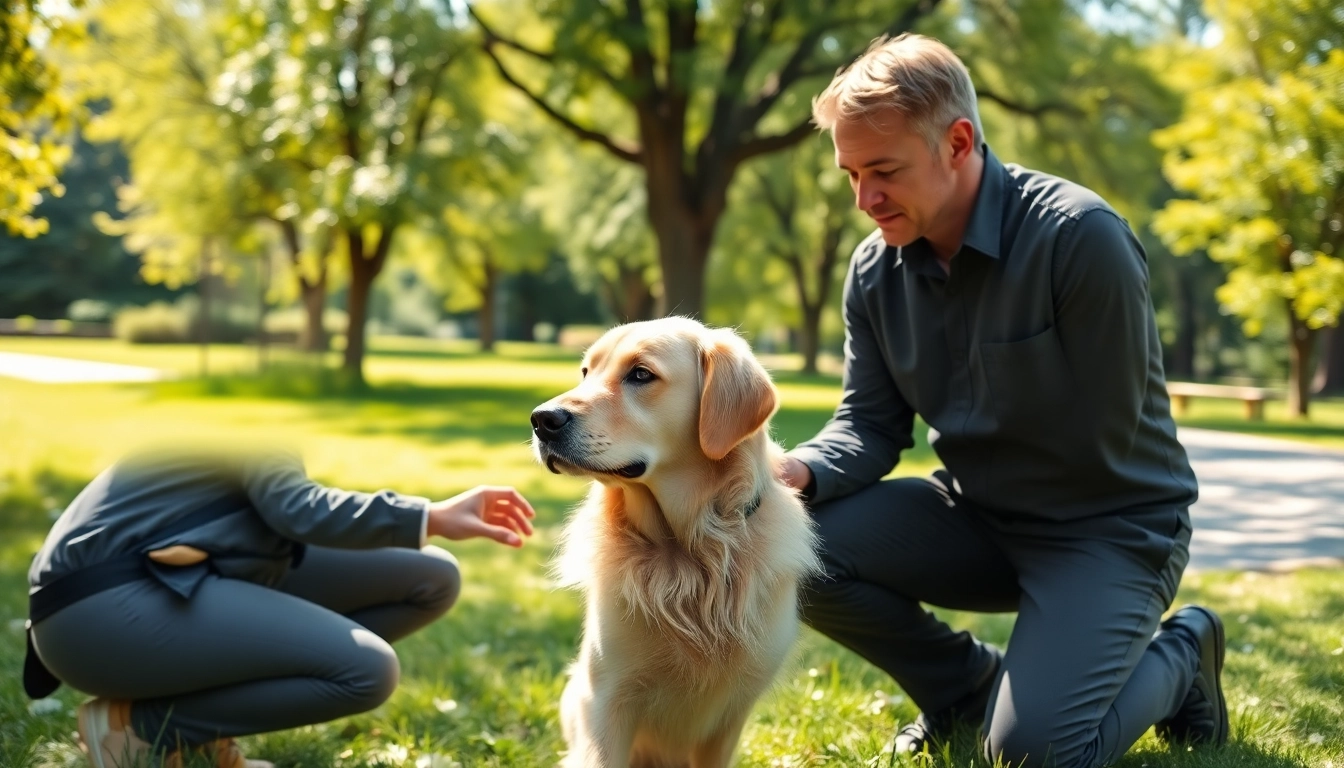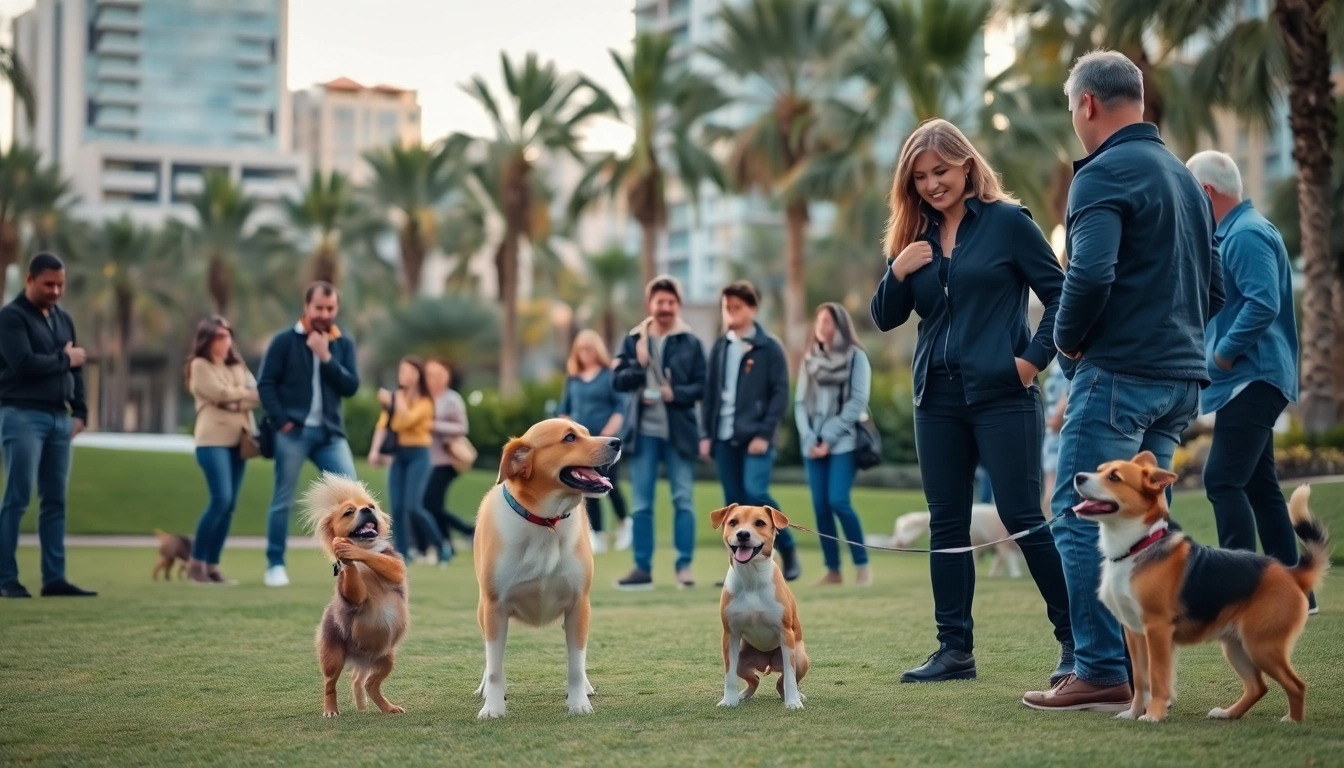Understanding Service Dog Training
Service dog training is a specialized form of education for dogs that equips them with skills necessary to assist individuals with disabilities. This training not only requires technical skills but also a deep understanding of the unique needs of the handler. A qualified service dog trainer plays a pivotal role in ensuring that these dogs are effectively prepared for the responsibilities they will take on in their roles as service animals.
What is a Service Dog Trainer?
A service dog trainer is a professional who specializes in training dogs to perform tasks that assist people with disabilities. The trainer must possess a solid understanding of canine behavior, effective training methods, and the specific needs of individuals who benefit from service dogs. This includes guiding individual clients in identifying their needs and tailoring training approaches to address those needs, ensuring that the service dog can provide the appropriate support.
Types of Service Dog Training Programs
Service dog training can take various forms, depending on the specific needs of the individual and the tasks the dog will be trained to complete. Common types of service dog training programs include:
- Mobility Assistance Training: This training is aimed at helping individuals who have physical challenges. Tasks may include retrieving items, opening doors, or providing balance support.
- Seizure Alert Training: Dogs trained in this category can sense changes in their owner’s behavior and alert them to an impending seizure.
- Emotional Support Training: These dogs are trained to provide companionship and comfort to individuals with mental health conditions, such as anxiety or PTSD.
- Autism Assistance Training: Dogs trained for children or adults with autism help reduce anxiety and provide safety, among other support tasks.
Benefits of Professional Service Dog Trainer Assistance
Hiring a professional service dog trainer comes with numerous benefits. Key advantages include:
- Expert Guidance: Trainers bring expertise that helps in equipping both the dog and handler with the necessary skills to operate effectively as a team.
- Custom Training Plans: Professional trainers can create personalized training plans that cater specifically to the handler’s unique needs.
- Building a Strong Bond: Trainers often emphasize the importance of the bond between dog and handler, leading to better performance and stronger partnerships.
- Ongoing Support: Many trainers offer ongoing support even after formal training has concluded, ensuring that the skills are maintained and improved over time.
Key Qualities of a Great Service Dog Trainer
When selecting a service dog trainer, it’s vital to look for specific qualities that indicate their capability to provide high-quality training. These include:
Experience and Certifications to Look For
A great service dog trainer should have substantial experience in training service dogs, particularly in the specific tasks necessary for your needs. Furthermore, certifications from recognized programs can indicate a level of professionalism and understanding in the field. Trainers should ideally have extensive knowledge of laws regarding service animals and can navigate both training and legal aspects of service dog ownership.
Understanding of Dog Behavior and Training Methods
Successful service dog trainers possess a deep understanding of canine behavior and various training methodologies. This includes familiarity with positive reinforcement techniques, which are fundamental in training service dogs effectively. Trainers should use methods that not only teach commands but also encourage natural behavior and responsiveness.
Compassion and Patience in Training
Training a service dog can be a challenging process. Trainers need to demonstrate compassion and patience, particularly when working with dogs that may need more time to comprehend specific tasks. A compassionate trainer fosters a trusting relationship with both the dog and the handler, which ultimately enhances learning outcomes.
Choosing the Right Service Dog Trainer
Selecting the right service dog trainer is a crucial step in ensuring the success of your service dog team. Here are some factors to consider in making your choice:
Questions to Ask Potential Trainers
When interviewing potential trainers, asking the right questions can help you gauge their expertise and fit for your needs. Consider asking:
- What certifications do you hold that are relevant to service dog training?
- What is your experience with training dogs for my specific needs?
- Can you provide examples of successful teams you have trained?
- What training methods do you use, and why?
Evaluating Training Facilities and Setups
Inspecting the training facility can provide insights into the trainer’s practices and professionalism. Look for clean, safe, and well-equipped environments. The facility should also allow for various training exercises, including real-world simulations that reflect the environments where the dogs will be assisting their handlers.
Reading Reviews and Testimonials
One of the best ways to assess a trainer’s effectiveness is by seeking reviews and testimonials from previous clients. Look for feedback regarding the trainer’s methods, effectiveness in enhancing a dog’s capabilities, and overall satisfaction of past clients. This third-party perspective can be invaluable in guiding your decision.
Training Techniques Used by Service Dog Trainers
The methods employed by service dog trainers play a crucial role in the success of the training process. Here, we explore some common techniques:
Positive Reinforcement Methods
Positive reinforcement is a prevalent technique among service dog trainers. It involves rewarding desired behaviors to increase the likelihood that those behaviors will occur again. Rewards can be verbal praise, treats, or playtime. This method not only builds the dog’s confidence but also strengthens the bond between the dog and the handler.
Socialization and Public Access Training
Service dogs need to be well-socialized and able to handle public access situations calmly. Training often includes exposing dogs to various environments, sounds, and distractions that could be encountered in day-to-day settings. This prepares them to remain focused on their tasks in challenging situations, enhancing their effectiveness as support animals.
Addressing Common Behavior Issues
A trained service dog must display good behavior and focus on their tasks. Trainers often incorporate techniques to address common behavior issues, such as barking, chewing, or anxiety. Early intervention and consistent training can mitigate these challenges, ensuring the dog is well-prepared for its service role.
Continuing Support After Training
Once the initial training is complete, ongoing support is essential to maintain the skills that the service dog has learned. Consider these aspects:
Maintaining Skills with Ongoing Practice
To ensure that your service dog remains proficient in its trained tasks, regular practice is necessary. Engaging in daily activities together and revisiting training exercises can reinforce skills and promote their use in real-life scenarios.
Resources for Service Dog Owners
Service dog owners can benefit from various resources, such as local support groups, online forums, and educational materials. Many communities have organizations that offer ongoing education and support for service dog handlers, helping them navigate challenges and stay informed about best practices.
Building a Community Around Service Dog Support
Connecting with other service dog teams can provide invaluable support and encouragement. Engaging with a community allows handlers to share experiences, tips, and strategies, fostering a network of support that can enhance the overall experience for both the handler and their service dog.



